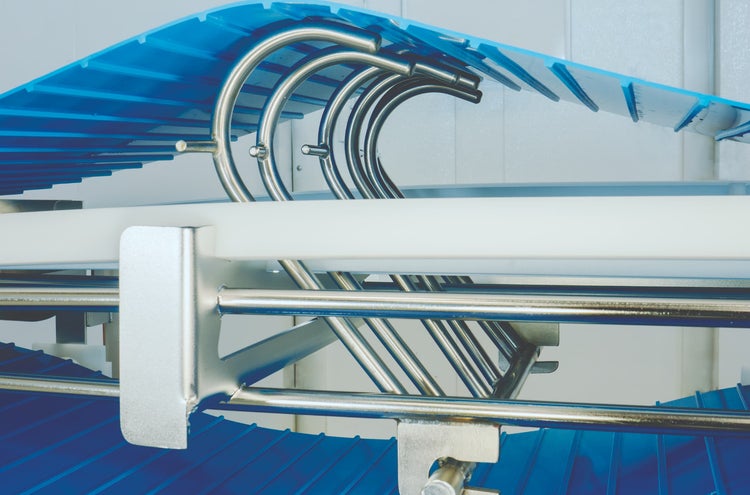The Evolution of Hygienic Design

For many years, suppliers to the food industry were primarily focused on the functionality and productivity of their designs. Whether they were supplying HVAC systems, equipment or machine components, their biggest concern was: ‘Does the performance capacity meet the customer’s needs?’. The matter of how to clean it or maintain it throughout its entire life cycle wasn’t really a priority.
Often, after a while, it was necessary to make adjustments in order to continue to comply with the ever-stricter food safety requirements. Designs that were difficult to clean because of numerous hard-to-reach areas (sandwich-points) were amended; objects that could form a potential foreign-material risk in the vicinity of the food flows – e.g. glass light bulbs that could fall into the product if damaged – were replaced; motor drives positioned directly above the food flow without much, if any, protection of the products below were moved elsewhere.
Thankfully, hygiene and food safety are increasingly being given the attention they deserve from the very first stage of design. That is encouraging, to put it mildly. After all, as a food processing company, you want your purchase to last for years. On top of that, a hygienically designed machine can be cleaned more quickly and effectively, and that saves a lot of time, money and effort. In other words, good hygienic design is fundamental for food safety and hence for consumer trust.
"The best designs, in terms of both productivity and food safety, are the result of good collaboration between food manufacturing companies and their suppliers."
Now I can almost hear you thinking: ‘That’s all well and good, but some of the machines in my plant are old but they still work fine, and I don’t have the budget to update them all just like that’. Unfortunately we often find ourselves confronted with legacy equipment from bygone times in which there was less focus on hygienic design. There is a solution for that too; we sometimes have to make concessions, even in a new design. If you don’t have optimal hygienic design in your facility, for whatever reason, it is wise to assess the associated risks. After all, to measure is to know. That’s the only way to manage the potential risks successfully with effective cleaning procedures.
One thing’s for sure: the best designs, in terms of both productivity and food safety, are the result of good collaboration between food manufacturing companies and their suppliers. The best insights emerge in multidisciplinary teams, when the people responsible for either design, production, maintenance or cleaning work come together to analyze the conceptual drawings for a new machine.




